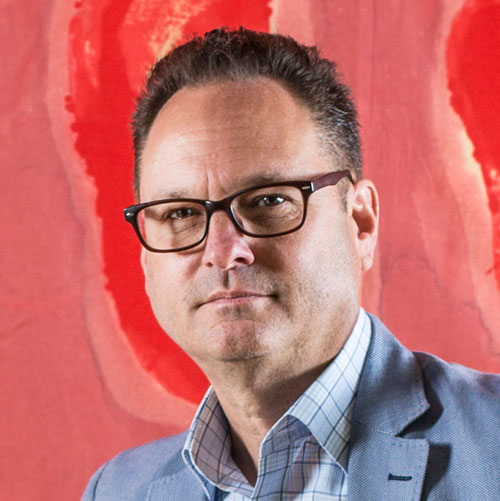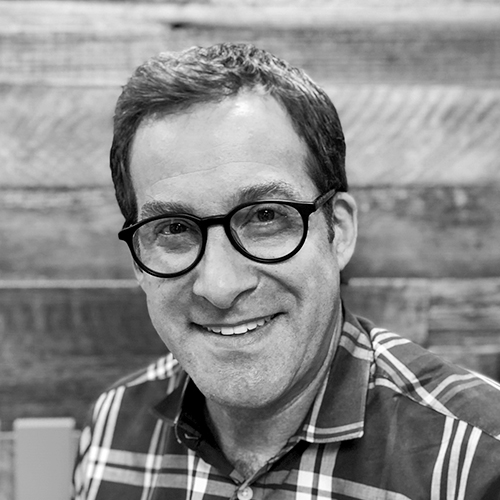Twenty-five years ago, J. P. Iberti and Todd Carmichael founded La Colombe and built their first café in Philadelphia, using materials they bought at their local hardware store. Last year, their company built its first ground-up café in La Jolla, California, infusing a jolt of individuality into a shiny new development by incorporating raw materials, hand-forged elements, a custom steel storefront, and exposed beams that support the structure.
“The owners of the development had a design that was already permitted and approved,” says Iberti, who now also leads La Colombe’s café design and construction projects. “We asked if we could scrap the design and do it ourselves. It was trying, but the end result was amazing.”
It’s also representative of the company’s current approach. La Colombe has grown from its modest beginnings into a major player in the café-retail space, with 30 locations and counting in six major US metropolitan markets. It doesn’t buy materials from the local hardware store anymore, but its pioneering spirit remains as it conceives and refines the look and layout of each of its new locations to better position them as comfortable, attractive central meeting places for a considerately targeted base of clientele.

“We look for central business districts and emerging neighborhoods,” says Michael Gray, the company’s director of real estate. “We need foot traffic where there’s emerging housing and coworking populations. Our cafés really become a hub for emerging neighborhoods. General contractors, interior designers, architects—they all use our cafés as a meeting point.”
La Colombe works directly with coffee farmers to source exotic and rare beans that deliver a unique taste. The company samples each delivery to ensure that the quality meets its standards, and it partners with cafés, restaurants, grocery stores, and hotel chains to develop custom programs to deliver its coffee to new customers. Those partnerships go a long way in cities teeming with shopping, hospitality, and dining options.
“We’re a multichannel coffee company,” Iberti says. “We have a hospitality arm that has always been the scout. When we did New York, for example, we built inner knowledge of the city and what was happening. We’re able to get to know a city before we open a store. We’re part of every new restaurant that opens in a city. It’s kind of built-in. We know the map.”
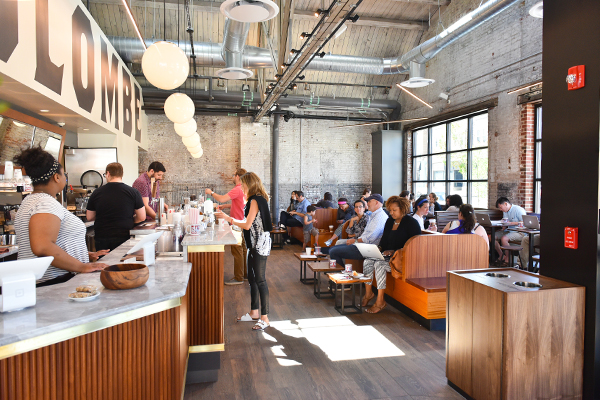
In addition to Philadelphia, La Colombe has the lay of the land in Boston, Chicago, Los Angeles, New York, and Washington, DC. Although both Gray and Iberti say that the locale can influence the design of a location, there is still a uniformity to La Colombe locations—though not necessarily in a way that customers might notice.
“We have standardized things our customers don’t see,” Gray says. “How the back of house is arranged or how back of bar is laid out—little things that give our staff the best opportunity to be as efficient as possible. J. P.’s good at getting into a market and figuring out the psychographics of customers.”
Because La Colombe is focused on psychographics, its internal design debates don’t necessarily veer toward whether, say, floors should be wood or tile. “The only fight we’ve ever had about design has been about flow,” Iberti says. “It’s never been about materials we’re going to use. It’s always, ‘What can we do about the space and moving people? Where should people pick up? How should people wait in line?’”
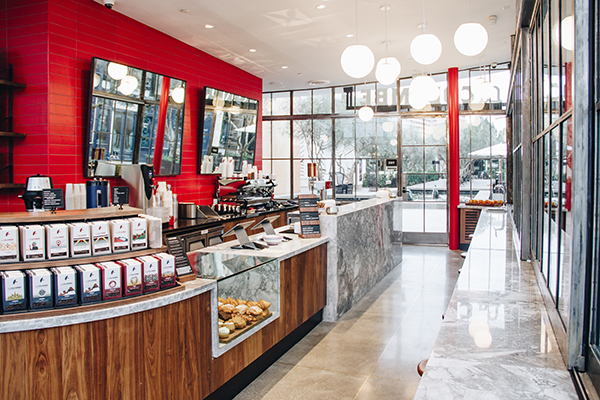
It’s the line, surprisingly, that might hold the key to a La Colombe location’s success. “Waiting in line is a great thing if people feel comfortable in your line,” Iberti says. “It’s a weird thing to say, but people can enjoy lines.”
The key is comfort. In its LA locations, Gray says, La Colombe provides more open space for comfort because that’s what customers want; in New York, by contrast, customers tend to be used to tighter spaces. Either way, he says, it’s about keeping local customers relaxed.
Such intense attention to the customers’ needs often leaves La Colombe’s design team on a different page than its architects. “I drive architects crazy because I think they overdesign things,” Iberti says. “If you want a balance between truth and beauty, there’s a perfection that architects seek that’s too perfect. Our mission is to make people happy with coffee. That’s the driving force, but it’s not what an architect thinks of.”
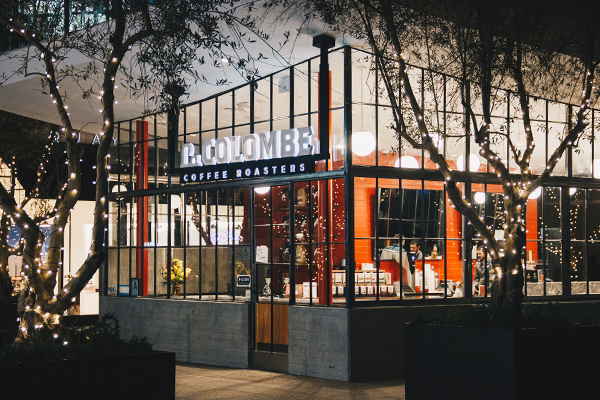
La Colombe’s ideas regarding how to make people happy with coffee don’t take shape in conference rooms, away from the action, either. Its Fishtown location in Philadelphia also holds the company’s executive offices, forcing employees to walk through the café on their way to and from work every day, to see firsthand what’s working and what needs tweaking.
While the café-retail industry is always evolving, both Gray and Iberti say the goal is to keep La Colombe’s finger on the pulse of shifting market dynamics and store-layout strategy. Asked what the future holds, Gray says that few things are definite but that he feels safe wagering that coffee won’t lose its popularity or appeal anytime soon.
With that in mind, Iberti says, La Colombe will continue to open more locations, and it has no plans to slow down. And, as it does so, it will continue to adapt its designs to the needs and comforts of its customers. “We’ll keep on growing,” Iberti says. “I know the café we have today is not the café we’re going to have ten years from now. It’s the industry we’re in. We’re going to keep chasing that sweet spot.”
Photos: Alexander Mansour/Courtesy of La Colombe Coffee Roasters
